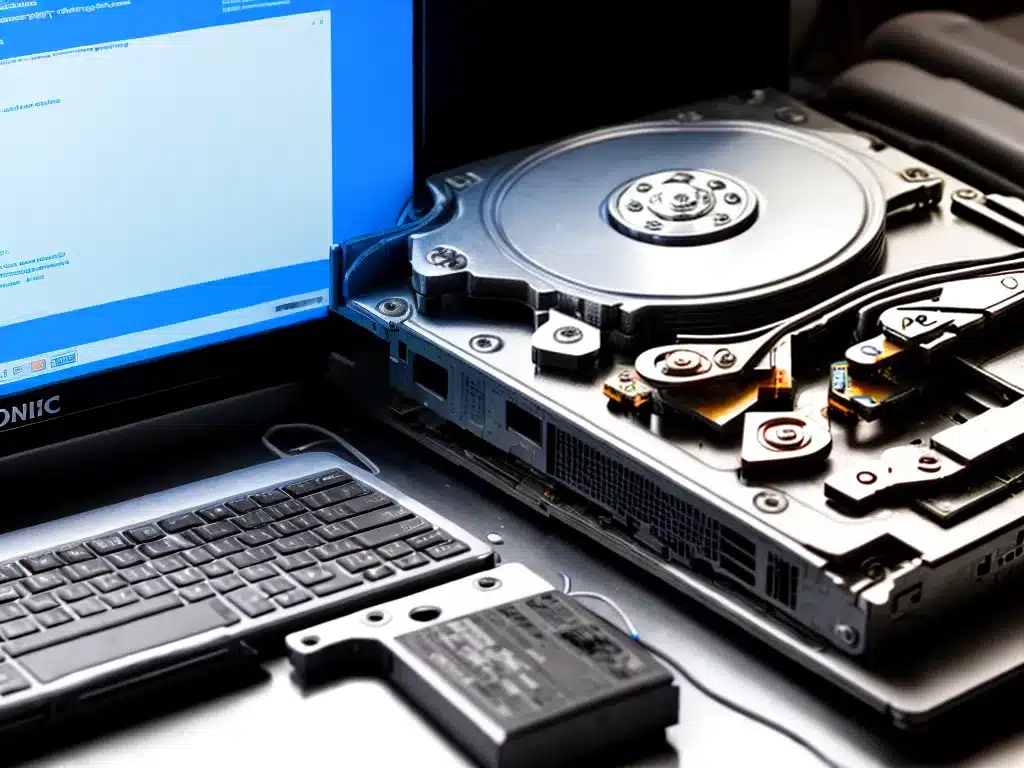
Introduction
Upgrading your PC with a new hard drive can be a great way to increase your storage space or improve performance. However, before swapping out your old hard drive, it’s important to make an exact copy, or clone, of the drive so you don’t lose any of your files or have to reinstall your operating system and programs. Cloning your hard drive before upgrading is the safest way to keep all your data intact.
In this article, I will walk through the complete process of cloning your hard drive before upgrading your PC. I will cover:
- The benefits of cloning your hard drive
- How to choose a new hard drive
- Cloning tools to use
- Step-by-step instructions to clone your drive
- Transferring the clone to the new hard drive
- Verifying the clone was successful
Follow these steps properly and you can upgrade your hard drive seamlessly, without losing any files or settings.
Benefits of Cloning Your Hard Drive
Here are some key reasons why you should clone your hard drive before upgrading your PC:
-
Saves time – Cloning copies the entire contents of your old drive. You won’t have to reinstall your operating system, drivers, programs, and reconfigure settings.
-
Preserves data – All your files, photos, music, and documents are safely copied to the new drive.
-
Avoids reactivation – You won’t have to reactive any paid software or subscriptions. The clone is identical.
-
Copies your OS – The clone contains your Windows or Mac operating system, with all updates, drivers, and boot configurations.
-
Retains customizations – Any tweaks you’ve made to OS settings are preserved. You also keep your installed programs and file associations.
Cloning saves you a huge headache compared to starting from scratch with a clean install. It’s the risk-free way to upgrade.
Choosing a New Hard Drive
Before cloning, you need to choose a new hard drive to upgrade to. Here are some tips:
-
Storage capacity – Choose a drive with enough storage to hold all the data from your old drive, with room to grow. At least 20% more capacity is recommended.
-
Connection type – Match the connection interface (SATA, PCIe, etc) to your PC’s motherboard. M.2 and 2.5″ SATA SSDs are common upgrades.
-
Form factor – Measure the dimensions of your current hard drive for an exact physical match. Many PCs take standard 2.5″ or 3.5″ drives.
-
Performance needs – Faster SSDs offer big performance gains. Pick an SSD with good sequential read/write speeds for your budget.
-
Reliability – Check manufacturer ratings for mean time between failures and warranties. Brands like Samsung and Crucial make reliable drives.
Once you select the right new hard drive for your PC, you’re ready to clone!
Cloning Tools
You need an application to perform the actual cloning process. Here are some good options:
-
Macrium Reflect – Free disk cloning and imaging software for Windows. Simple interface and scheduler.
-
Acronis True Image – Reliable paid option for Windows and Mac. Offers cloud backup integration.
-
Carbon Copy Cloner – Popular cloning app for Mac users. Can schedule incremental backups.
-
Clonezilla – Open source cloning tool that works on most operating systems. More advanced interface.
Many SSDs come with free cloning software or download codes as well. Look for offers from Samsung and Crucial when you buy.
The process is essentially the same regardless of which cloning tool you use. Follow the steps below for your chosen program.
Step-by-Step Cloning Instructions
Follow these steps to safely clone your hard drive before upgrading:
1. Install cloning software
Install and open your chosen cloning application on the PC. Make sure the old drive and new drive are both connected.
2. Select source and destination
In the cloning app, select your current hard drive as the source drive. Then select the new drive as the destination.
3. Check sizes and prepare destination
Verify the new drive is equal or larger in capacity. Allow the app to format and prepare the destination drive if prompted.
4. Begin the cloning process
Start the clone operation within the software. This can take 1-5 hours depending on drive sizes and connection speeds.
5. Verify the clone
Once complete, use the app to examine the clone and verify all data copied over successfully. Check for any errors.
At this point, you should have an identical clone of your original hard drive backed up on the new drive.
Transfer Clone to New Hard Drive
With a verified clone complete, you can swap in the new drive:
-
Shut down your PC and open the case.
-
Physically remove the old drive and install the new drive in its place.
-
Boot your PC – it should start normally from the cloned drive!
With the clone in place, you can reformat the old drive or keep it as an external backup. Enjoy your upgraded PC!
Verify Successful Clone
To be sure the clone worked and your system functions properly:
-
Check disk space – Verify you have all your free space available.
-
Open files – Launch apps and open documents to check they work correctly.
-
Examine OS – Log in, connect to WiFi, and validate OS settings carried over.
-
Run benchmarks – Optionally use tools like CrystalDiskMark to test performance.
If everything looks good, you have successfully upgraded your hard drive. Cloning ensures an easy, seamless transition process.
Conclusion
-
Cloning your hard drive before upgrading is the best way to migrate to a new drive safely.
-
Use reliable cloning software and follow the step-by-step process.
-
Carefully choose a new drive with enough capacity and performance.
-
Verify the cloned drive thoroughly beforephysical installation.
Cloning reduces headaches and protects your data when upgrading PCs. With the right preparation, you can install a new hard drive quickly and painlessly.












